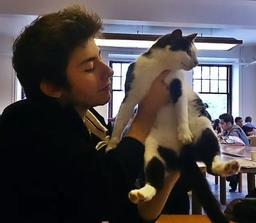Up until now we've learned about conditional sentences that are about things that can happen, or that happen regularly based on some conditions. Now we will see counterfactual sentences. These sentences talk about how things would be now, if things in the past were different. When using this structure, the main clause always has past tense markers, plus an aorist. In the conditional clause we use: -sEydİ and -sEymİş to convey this meaning. In this series you will only learn about -sEydİ.
Counterfactual conditionals
-sEydİ
This is the most common way to make counterfactual sentences. The conditional clause gets -sEydİ, and the main clause gets a past tense marker (-Dİ or -mİş) and usually an aorist. The 'to be' verb again is expressed with the help of auxiliary 'ol-'. Let's see some examples:
| Yakışıklı olsaydım herkes bana aşık olurdu. | If I were handsome, everyone would have fallen in love with me. |
| Ocağı kapatsaydım evdeki yangın çıkmazdı. | If I had turned the oven off, the fire in the house wouldn't break out. |
An important point: even though we use past tense markers, the sentence does not have to be about the past. For example:
| Okulu yakın olsaydı her gün kütüphaneye giderdi. | If his school was close, he would go to the library every day. |
| Suzan'ı sevseydim yarınki partiye gelirdim. | If I liked Suzan, I would come to the party tomorrow. |
This concludes the predictive conditional sentences. In the next lesson, we'll move onto knowable conditional sentences.

